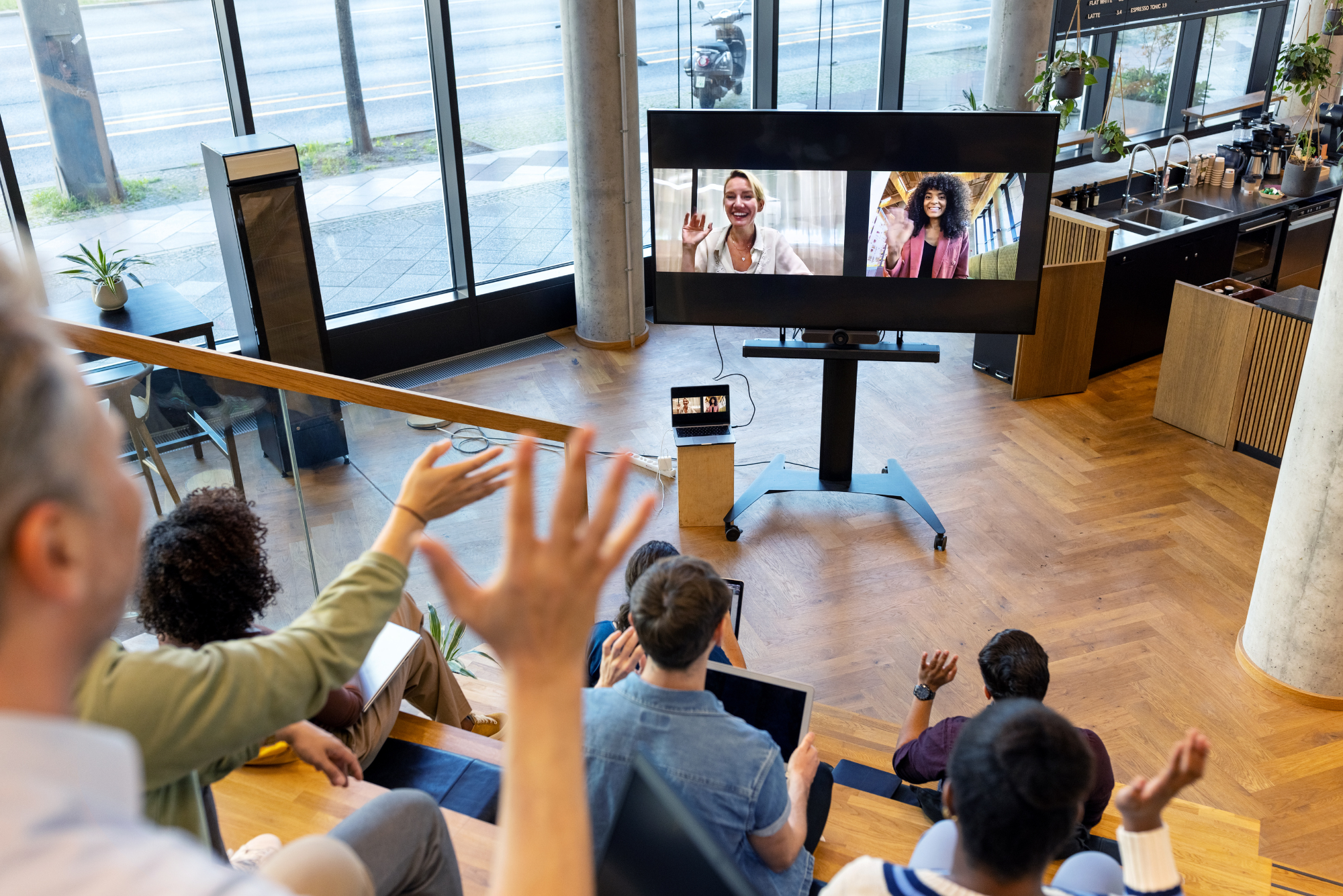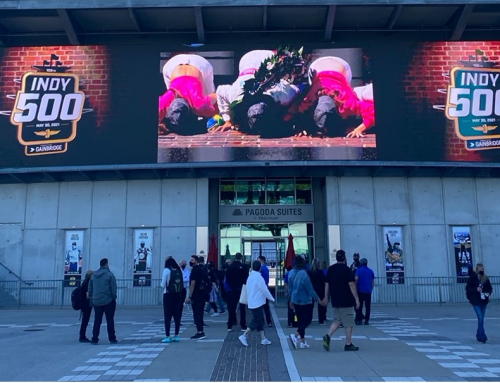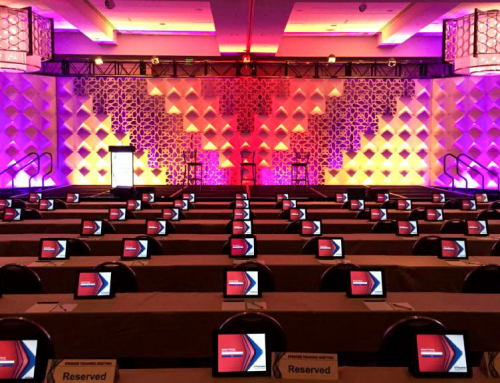An event’s success isn’t measured by the number of people who show up. It’s measured by how well the attendees understand, absorb, and implement the content.
Engaging your audience starts with getting to know them. You’ll approach engagement differently at a pharmaceutical investigator meeting than at a sales conference in the technology industry.
At innoVia Productions, we know there’s no “one-size-fits-all” approach to audience engagement. We reach out to our clients early to help them decide what tools will grab — and keep — their audience’s attention.
Not sure where to begin? Here’s our guide to planning and using audience engagement tools.
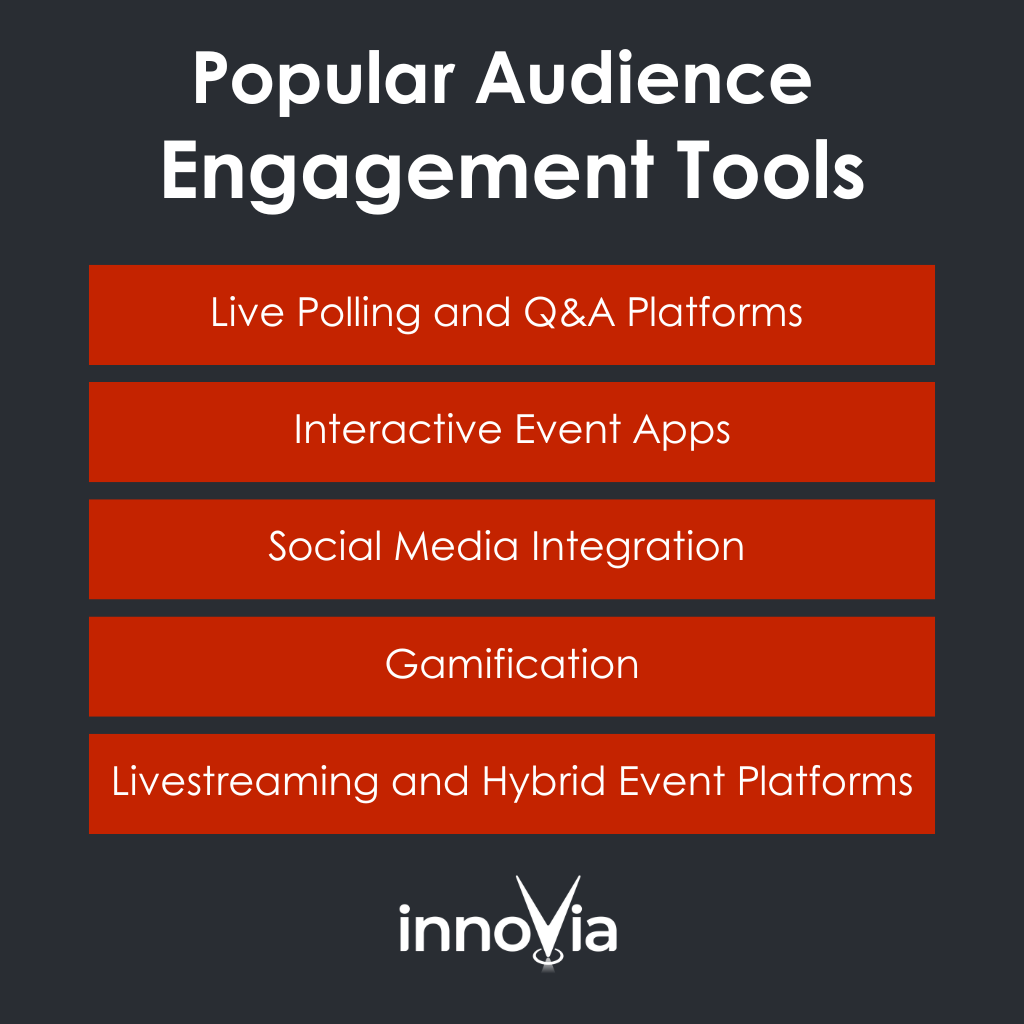
Popular Audience Engagement Tools for Corporate Events
The right technology can make your content shine and, more importantly, capture your audience’s attention.
We use a combination of the following tools at most of our corporate events — and we tailor each solution for the specific audience we’re catering to:
Live Polling and Q&A Platforms
Live polling platforms like Slido collect attendee feedback instantly through real-time polls, surveys, and word clouds. These tools foster interaction by allowing attendees to ask questions and upvote others’ questions during sessions.
Meeting planners can also use platforms like Slido to conduct post-event surveys. They can ask specific questions about the tool’s ease of use, enjoyment, and perceived value to gauge satisfaction and gather suggestions for improvement.
Interactive Event Apps
Apps like Cvent have many uses, from planning an event to sending out a survey after it’s over.
During an event, interactive event apps serve as fantastic audience engagement tools that connect attendees with the content they want. They offer features like personalized agendas, interactive maps, live updates, and networking opportunities, making tracking attendee movement and interaction easy.
Social Media Integration
Encouraging attendees to engage with event-specific hashtags on platforms like X (formerly known as Twitter), Instagram, and LinkedIn can increase event visibility and attendee interaction. Use social media walls to display real-time social media activity.
Gamification
Games and challenges like quizzes, scavenger hunts, and reward systems get attendees involved and invested.
Make sure you incorporate games related to the event’s content and format. For example, a “passport” challenge where attendees collect stamps for visiting different sessions is great for a conference. However, meetings focused on education and training may not benefit from gamification at all.
Livestreaming and Hybrid Event Platforms
Hybrid events aren’t going anywhere!
Platforms like Zoom and Microsoft Teams, which integrate in-person events and remote attendees, are growing. By integrating these into your event, you open access to more attendees and benefit from features for live chats, breakout rooms, and networking.
Audience Response Systems
Sometimes, the best audience engagement tools are tried and true rather than new and flashy.
Many of our customers prefer physical touchpads over digital or mobile solutions, especially for audiences that may not be comfortable with the latest gadgets and apps. Devices like Padgett Communications’ keypads can help you engage these audiences.
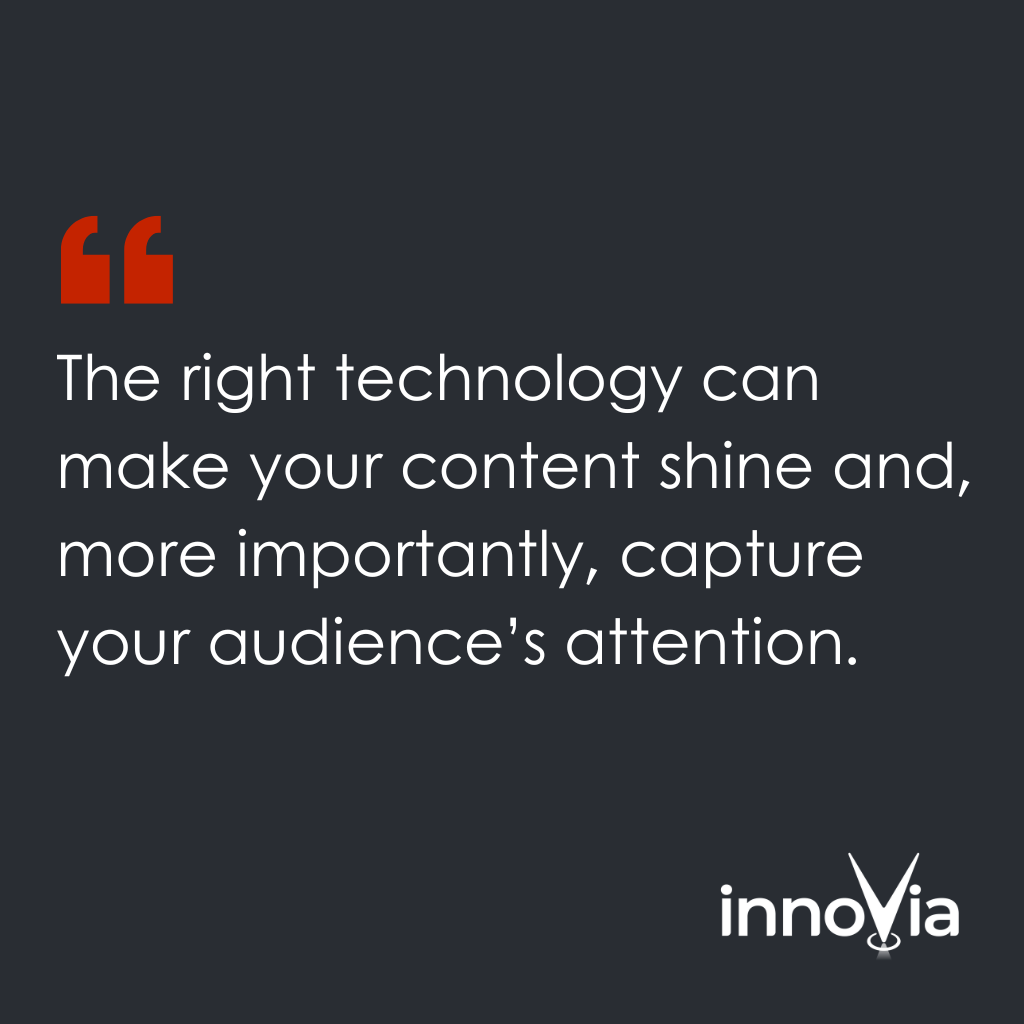
Getting the Most Out of Audience Engagement Tools
Don’t use engagement tools just for the sake of using them. Instead, focus on the results you want to achieve for your audience, then choose the tools that support those goals.
Here’s how a thoughtful combination of tools can enhance your overall event experience:
Increasing Interactivity and Feedback
Interactive tools turn passive audiences into active participants, making events more memorable, dynamic, and impactful.
Real-time feedback can also help presenters better meet a particular audience’s needs. For example, take a look at this poll:
What is your job position?
- A — An executive
- B — A director
- C — A manager
- D — An employee
Presenters can use the results to adjust or better focus their presentations on the fly, which increases relevance and effectiveness.
Reaching More People
Some invited attendees may not be able to travel to your event. Virtual and hybrid events extend your reach and allow you to engage a much broader audience.
Hybrid event technology can also make your event more inclusive and accessible. For example, some people need captions or accommodations for visual impairments and other disabilities. Inviting remote participants brings attendees of all abilities into the fold.
Enhancing Content Engagement
Social media integration, gamification, polling, and Q&A opportunities encourage attendees to creatively engage with content, share insights, and participate in new ways. A simple event hashtag can help your content reach people outside the event, too.
Gaining Data-Driven Insights
The right audience engagement tools are valuable even after the event is over.
Many tools collect information about attendee behavior, participation, preferences, and feedback that can help you adjust the content and schedule for next year. For example, if you notice a significant drop-off after lunch, adding an activity after the break can restore attendees’ energy.
Recently, I helped produce a very active virtual event with plenty of comments, a thriving Q&A session, and a flurry of emoticons filling the screen. High participation rates like these indicate effective engagement. It showed us what was working and what wasn’t, and now we can compare those metrics to our benchmarks to learn what a successful breakout session looks like.
Common Audience Engagement Challenges
Integrating audience engagement tools into corporate events isn’t always easy, but the rewards are worth the challenge. When you run into integration issues, consider these solutions:
Challenge: Technical difficulties
Solution: Practice, practice, practice! When you rehearse for your event, include a complete run-through that tests each point of failure, from engagement tools to hardware and the internet. Ensure your audience and presenters know how to use the tools, and always keep an experienced technician in the room.
Challenge: Audience fatigue
Solution: Don’t overload your attendees with too many engagement tools to download and learn. Instead, consolidate apps for a smoother, purpose-driven experience. If you’re using Slido for your polls, use it for your Q&A, too.
Challenge: Low adoption rates
Solution: If your audience is reluctant to use new tools because of complexity or unfamiliarity, lower the barrier to entry with user-friendly tools. For some audiences, this could involve scanning QR codes to access engagement tools. For others, you may provide pre-loaded iPads. Whatever your solution, provide clear instructions or a one-page “Know Before You Go” pamphlet at the beginning of the event.
Challenge: Privacy and security concerns
Solution: Set your objectives early, especially for events in the finance and healthcare industries. If you know what information you can collect and what information could break data protection regulations, you can choose tools that comply with your security and privacy needs.
The Future of Audience Engagement
Audience engagement tools are constantly evolving.
Looking into my crystal ball, I see a rise in tailored event experiences. An advanced AI may analyze attendee behavior — or individual job titles, roles, and companies — and auto-select the best sessions for each person. This will probably lead to more robust engagement and satisfaction as attendees connect with the most relevant content.
Another trend I see evolving into a new norm is hybrid event integration.
The event industry learned a lot during the pandemic, and we’re still refining the virtual event experience with robust engagement features. As integration improves, so will engagement. Event planners can ensure consistent experiences, equally involved audiences, and expanded reach.
Always Rely on Engaging Content
I was once part of a big pharmaceutical event in Copenhagen. A panel of delegates flew in from all over the world to participate. But on the big day, a citywide blackout stopped us in our tracks.
We couldn’t reschedule such an important session, so we took the seats off the stage, set them up in the middle of the room, rearranged the tables, and turned on the emergency lights. With no screens, no audio, and absolutely no technology involved, you might expect that the panel was a disaster.
But it wasn’t. Everyone gathered around our presenters like a campfire storytelling session. People listened intently and raised their hands to ask questions. Everybody was hugely engaged.
The moral of the story? Audience engagement tools can elevate your event, but don’t use them to compensate for poor content. Great content leads to strong engagement regardless of the tools you choose.
We at innoVia can engage your audience, whether you have dozens of audience engagement tools at your fingertips or you have to hold your event during a blackout. Learn more about our services today.
